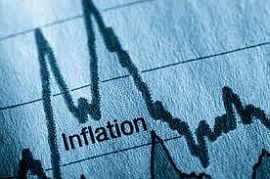Analytics, Economics, EU – Baltic States, Financial Services, Inflation, Latvia, Legislation
International Internet Magazine. Baltic States news & analytics
Friday, 26.04.2024, 13:08
Core inflation in Latvia likely to return to 2.5% at end-2013
 Print version
Print version |
|---|
Price dynamics in Latvia this year will be determined by the comparatively weak economic development in the European Union, which will also result in low inflation. The report says that there are no grounds to expect changes in food and energy price dynamics in 2013.
According to the program, the number of residents employed in the national economy will increase 1.4% in 2014, and it will continue to increase by an average 1.3% annually in the three subsequent years. Therefore, gross domestic product growth, just as in the past years, will be rather ensured by increasing productivity, not the number of employees.
According to the macroeconomic development scenario, Latvian economy will continue to be one of the fastest growing economies in the EU in the medium term. Taking into account the continuing recession in the eurozone and the fact that last year's record harvest will not be repeated this year, GDP quarterly growth pace will continue to reduce in the short term, and GDP quarterly growth will return to about 1% from the latter part of the year. GDP growth forecast for 2013 and for the medium-term is 4%, says the report.
With the employment gradually increasing, the unemployment rate will reduce in the medium-term, partly due to an expected reduction in the number of economically-active residents. This year, unemployment is to decrease to 12.6% of economically-active residents, and it will further decrease to under 10% in 2015. At the same time, the proportion of long-term unemployed will remain high, which means discrepancies in supply and demand on the labor market, and suggests structural unemployment risks, which may result in shortage of labor in certain professions and sectors in the future.
The growth in productivity over the past two years will remain as high until 2016. In the past four years, productivity has been growing faster than the actual remuneration, thereby increasing Latvia's competitiveness on external markets. It is expected that wage growth will not exceed productivity growth in the coming years too.
The Convergence Program notes several negative and positive risks.
One of the negative risks is that economic recovery in the euro area could be slower than anticipated, affecting Latvia's overall growth pace.
The unconvincing economic recovery in the eurozone and reducing economic growth pace in Latvia may also affect businessmen and consumers' confidence and therefore reduce the growth in demand in Latvia – households could choose to rather save money than spend it, whereas companies could invest less money than now.
The other negative risks include increasing labor costs, reducing number of economically-active residents, differences between the supply and demand on the labor market. This, in turn, may affect companies' workforces, growth and competitiveness of Latvia's exports, and investments, says the report.
Latvian banking sector's close ties with the Scandinavian banks is also seen as a risk. Should the eurozone countries' problems grow worse, Latvian companies' ability to borrow from banks could be affected, or bank loans could become more expensive.
The report also mentions such risks as the anticipated increase in electricity rates in Latvia, possible risks to residents' purchasing capacity, faster price growth than anticipated.
Whereas the main positive risks to the economic development of Latvia depend on avoiding the negative risks. Solving the eurozone debt crisis could have a better effect than currently expected, and the global economy development may be faster than anticipated. International lenders and rating agencies' assessment of the Latvian national economy confirms that the business environment in Latvia continues to improve, which may prompt influx of investment.
Latvia's accession to the euro area in 2014 is an important positive risk to the attraction of new investors in the medium term. Reducing currency risks may also result in a faster growth in exports. Likewise, absorption of EU funds and companies' savings have been a positive risk to the growth of investments in the Latvian economy.
The report also mentions such positive risks as banks' liquidity ratio and preparedness to lend to companies, strong stimuli to consumption growth, including the increasing wages and reducing tax burden, state support for re-emigration, mobility and retraining, which may accelerate re-emigration to Latvia, and if energy and commodity prices are lower than projected, inflation in Latvia will be lower than anticipated.
The Convergence Program for 2013-2016 is a medium-term policy document that describes Latvia's fiscal policy in 2013-2016. The Convergence Program is aimed at pursuing rigid and sustainable fiscal policy and ensuring the macroeconomic stability. The report describes the economic situation in Latvia, the effect of structural reforms on the national economy and public finances, the overall government budget and debt, macroeconomic scenario risks, comparison to the Latvian Convergence Program for 2012-2015 and recommendations by the EU Council, a comparison of the general government budget balance and debt projections, quality and sustainability of the public finances.
The Convergence Program will be submitted to the European Commission.








 «The Baltic Course» Is Sold and Stays in Business!
«The Baltic Course» Is Sold and Stays in Business!

